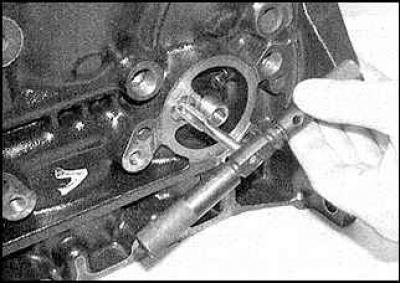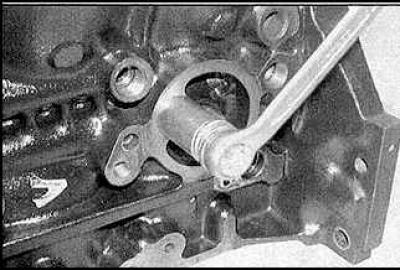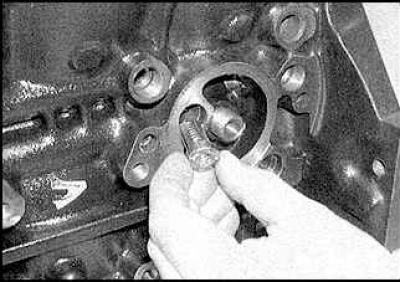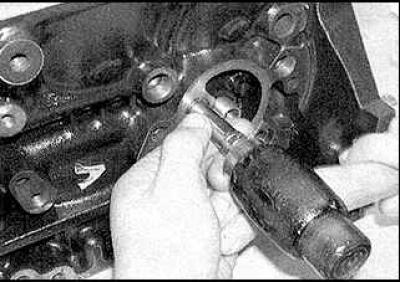Cleaning
1. Disconnect all external parts and sensors from the block.
2. Clean off all traces of sealant.

3. Unscrew or drill out plugs of oil channels. Cut the M10 thread in the bypass valve.

4. Screw the bolt into the valve.

5. Unscrew and remove the bypass valve located behind the oil filter.

6. Clean and flush the oil holes and oil passages with warm water and dry them with compressed air.
7. Clean the threads of the cylinder block bores with taps of the correct size.
8. Lubricate the block with oil and screw in new plugs, lubricating the threads of the plugs with sealant.
Examination
1. Inspect the unit for cracks and signs of corrosion or rust. Inspect the threads of the block holes. If defects are found, the unit must be repaired or replaced if possible.
2. Examine the cylinders.
3. Measure the diameter of each cylinder at the top middle and bottom, parallel to the axis of the crankshaft.
4. Measure the diameter of each cylinder in the upper middle and lower parts of it, perpendicular to the axis of the crankshaft.
5. The taper of a cylinder is calculated as the difference between the top and bottom diameters. Ovality is the difference between parallel and perpendicular measurements.
6. If the results obtained do not match the technical requirements, contact the specialists.

7. After completing the work, insert a new bypass valve into the cylinder block.

8. Drive the valve into place.

Visitor comments